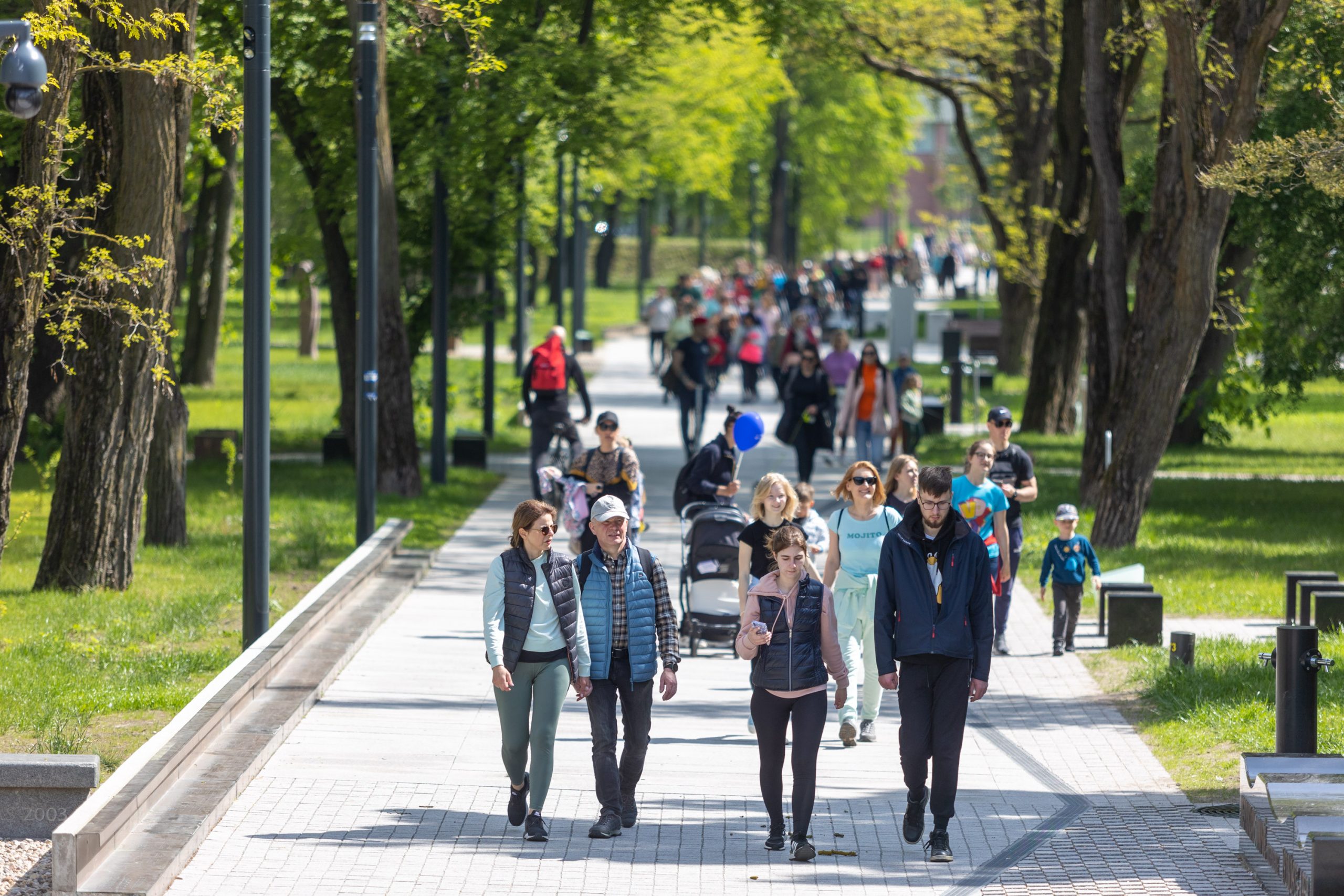Just 30 minutes of daily walking has many different benefits for our bodies. Walking improves heart function, reduces the risk of chronic diseases, helps prevent back pain, strengthens leg muscles, helps manage stress, reduces fatigue, boosts creativity, and improves general physical fitness.
Although most people know that movement is essential for maintaining health, according to the data from the Lithuanian Statistics Department, only 48 percent of Lithuanians walk 30 minutes or more per day. So, what influences our walking habits, and how many steps do people take per day?
Steps decrease with age
Regular physical activity helps maintain health and ensures a better quality of life at any age. Nevertheless, researchers note that physical activity decreases with age. A 2011 study finds that people aged 18 and older take between 4,000 and 18,000 steps a day. Meanwhile, the data from another research shows that children and teenagers collect 10,000-16,000 steps per day.
The authors of the latter study notice an interesting phenomenon – at the age of 18, the number of daily steps drops drastically. The analysis of children’s outdoor habits shows that younger children spend more time walking, running, and playing outdoor games. And the elders prefer passive activities – computer games, television, etc.
When analysing walking habits of men and women, it was noticed that men take more steps per day than women. Studies show that even in childhood, boys take 12,000-16,000 steps a day, while girls – 10,000-12,000 steps. This tendency does not change with age. According to a study conducted in the United States, men take an average of 5,340 steps per day and women walk 4,912 steps.
How many steps take office workers?
About 60 percent of our day is spent at work, so it is not surprising that our job has significant impact on physical activity. The Australian research on the activity of different professions illustrates that, for example, waiters walk three times more than office workers.

Which country walks the most?
Scientists say that the place where you live may impact your physical activity. A study published in the prestigious academic journal “Nature” shows that Hong Kong, one of the most densely populated countries in the world, walks the most in the word. On average, Hong Kong residents take nearly 7,000 steps a day.
According to the data of the free walking app “#walk15”, residents of Lithuania walk an average of 6,500 steps a day.
Although it is not clear why different countries show different levels of physical activity, researchers say that it may be influenced by climate, infrastructure, quality of life index, and country’s health profile.

How to walk more?
The World Health Organization (WHO) recommends do at least 150 minutes of moderate-intensity aerobic physical activity throughout the week. For additional health benefits, it is recommended to increase the training to 300 minutes per week.
Vlada Musvydaitė-Vilčiauskė, the founder and CEO of the walking app “#walk15”, notices that employers promote physical activity in workplace. One of the most popular ways to encourage people to walk more is virtual steps challenges, which are popular with companies in the Lithuanian and around the world.
“The steps challenge allows the company to engage its employees on wellness, sustainability and other topics important to the organizational culture. We notice that after joining the steps challenges, users take an average of 3,000-5,000 steps every day. And walking becomes the main topic during coffee breaks”, says V. Musvydaitė-Vilčiauskė.
Over 1,000 people from various domestic and global companies have used the “#walk15” steps challenges functionality in the last two years. And this year have a new trend – step challenges memberships, which allow use the functionality all year round.
For the convenience of companies, today a steps challenge can be created through an automated system with just a few clicks. You can try the step challenges for free HERE.

